-
 6172 Hits
6172 Hits
-
 87.31% Score
87.31% Score
-
 24 Votes
24 Votes
|
|
Mountain/Rock |
|---|---|
|
|
44.36767°N / 10.06296°E |
|
|
Emilia-Romagna/Toscana |
|
|
Hiking, Mountaineering, Scrambling, Skiing |
|
|
Spring, Summer, Fall, Winter |
|
|
6106 ft / 1861 m |
|
|
Overview
Geographical classification: Appennino Tosco-Emiliano e Tosco-Romagnolo > Appennino Parmense > Sillara
Sillara 1861 m
The Appennino Parmense Orientale is a chain located in the Eastern part of Parma Province administrative boundaries, allined on the border ridge separating Emilia-Romagna and Tuscany. This ridge is running between Passo del Cirone at the Western end and Passo del Lagastrello at the Eastern end. The highest peak of the whole Appennino Parmense - although for only twenty meters it overcomes - is just Monte Sillara 1861 m, a secluded and charming summit lying on the main boundary ridge. Sillara shows rather gently angled slopes on its NE side and a steeper rocky face on its SW side.
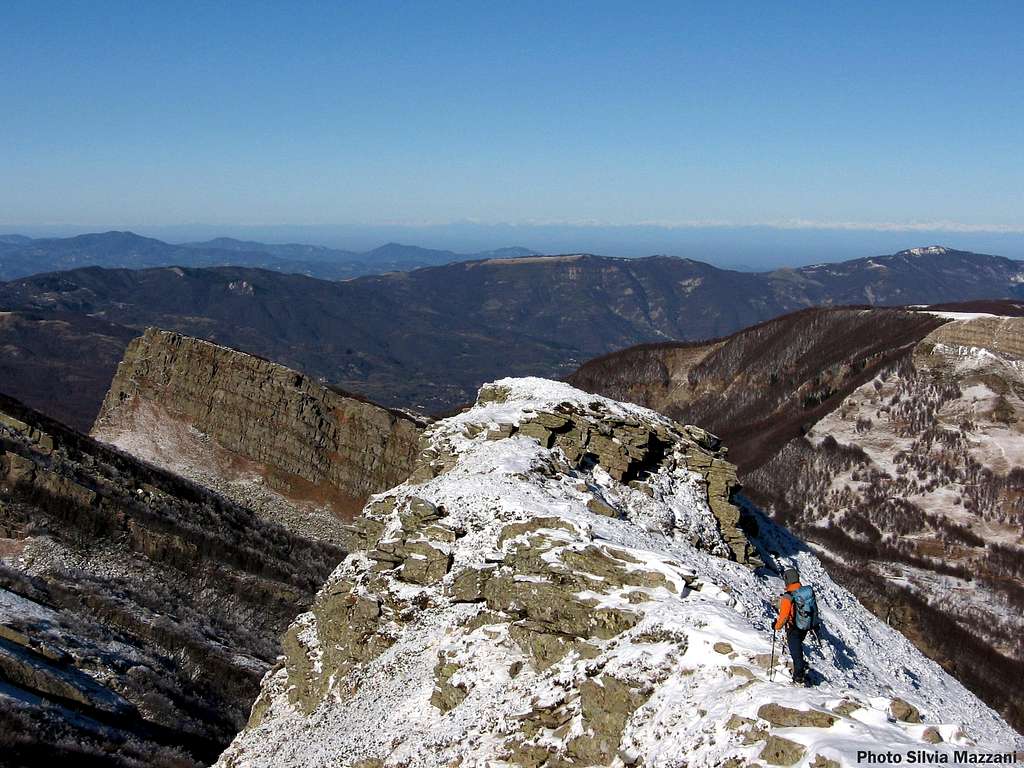
Sillara is surrounded by various charming lakes, amongst which the best known are the Laghi Sillara (Sillara Twin Lakes), located about one hundred meters below the mountain summit ridge, on its Northern side. The Parmense side is gently sloping towards the attractive basin of Laghi Sillara, while the side facing to Tuscany is higher and deeper, but very rarely climbed because of its long approaches and the poor quality of the rock.

Due to its elevation and its panoramic situation, Sillara is frequently climbed all year round; other reasons of its reputation are the easy access both in winter time and in the other seasons along its different Normal routes, making the mountain a popular hiking, mountaineering and ski-mountaineering destination, and the renowned summit view over Alpi Apuane and the Tyrrhenian Sea with Gulf of La Spezia. In the clearest day is possible to see also the islands of Tuscany Archipelago and even Corsica.
Getting There
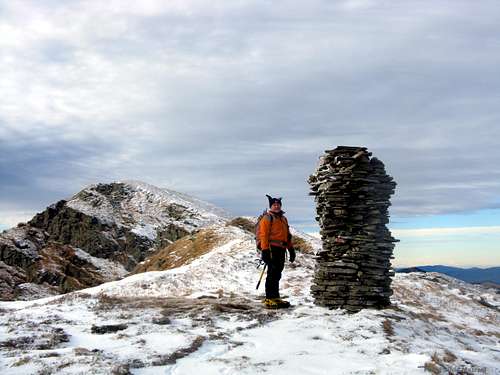
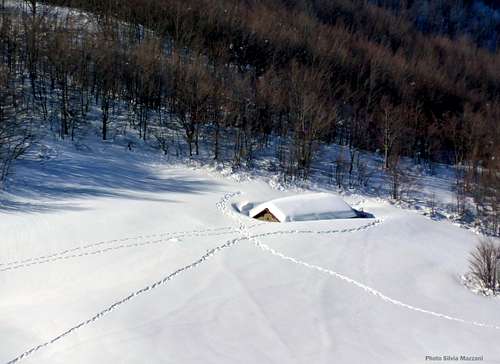
Road approach
Parma is the nearest town to Sillara; it’s a 200.000 inhabitants town with a small airport, offering some domestic flies and only a few international ones. A good choice of international flies is provided by Milan and Bologna International Airports, both situated at a reasonable distance (Milan 110 km., Bologna 90 km.). Parma is linked to other Italian and European towns by A1 and A15 motorways, so logistic is not a problem.
- Access from A1 (Autostrada del Sole) If you’re getting there from A1, coming from Bologna or from Milano, take the main Parma exit.
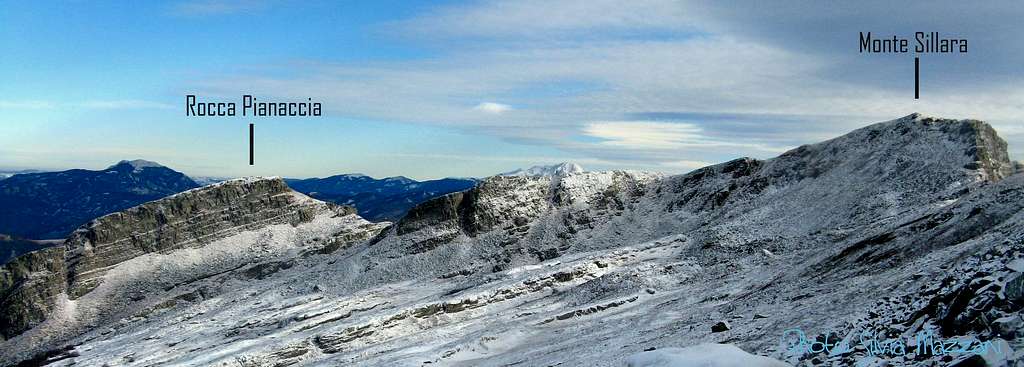
Monte Sillara can be climbed following three main normal routes, having three different starting points: Lagoni, Valditacca and Pratospilla.
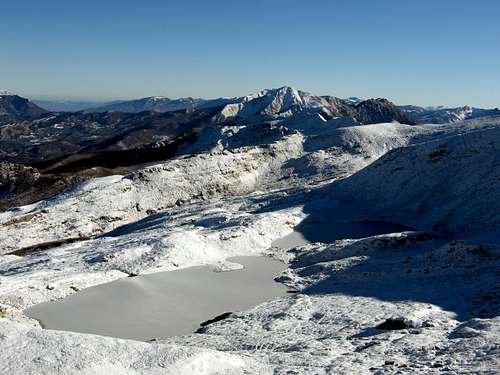
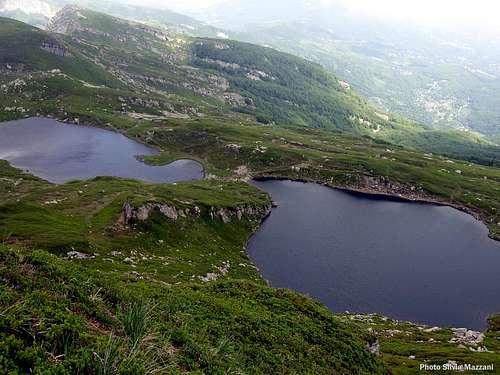
- Road access from Parma to Cancelli and Lagoni
Follow the SP 665B (Massese) towards Langhirano and Pastorello; getting the Pastorello roundabout, turn to right, reaching Beduzzo and Miano, where the road forks. Turn to right, getting to Bosco di Corniglio and the locality named Cancelli. Turn to left and follow the gravel road running inside the wonderful forest and getting to Lagoni. (parking).
- Road access from Parma to Valditacca
Follow the SP 665B (Massese) towards Langhirano and Pastorello; getting the roundabout keep straightly the main road SP 665, cross the bridge over the torrente Parma, reaching Lagrimone, Ranzano, Palanzano, Lugagnano. After Lugagnano, leave the main road and turn to right towards Pianadetto and Valditacca.
- Road access from Parma to Pratospilla
Follow the SP 665B (Massese) towards Langhirano and Pastorello; getting the roundabout keep straightly the main road SP 665, cross the bridge over the torrente Parma, reaching Lagrimone, Ranzano In Selvanizza leave the main road, keeping the left hand and follow the Valle dei Cavalieri road, pass Vairo, Nirone and reach Rigoso and Pratospilla.
Sillara main Normal routes
***Normal Route from Valditacca
Alpine F
Vertical gain: 840 m. from the parking, longer develop
From Valditacca follow the road to Passo della Colla and park the car in a pull out along the road, after about 1 km from Valditacca. Follow the road and where it forks, leave it and descent towards left reaching a bridge over a stream. Pass the bridge, then turn soon to right and follow the trail rising inside the forest and reaching a little wooden shelter (Capanna Forestale Pianaccia m. 1270). Follow the main trail n. 709, without taking the first junction, neither the second one on the left, getting to a third fork with the trail n. 711 on the right. Carry on directly on the main trail 709, getting the Rio Frasconi. Cross the stream and head to South, leaving now the main trail 709 and entering a beautiful narrow valley leading to a wide basin below the main boundary ridge. Climb straightly a steep slope, getting to the boundary ridge. Here turn to right (North) and follow the wide ridge to the summit cross.
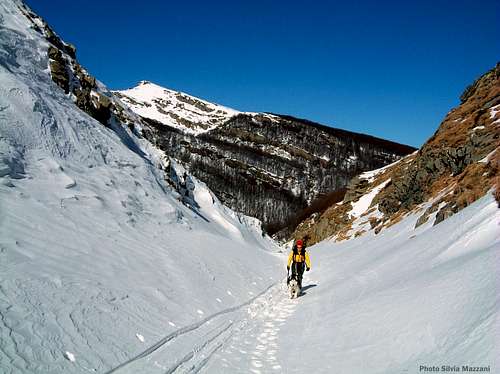
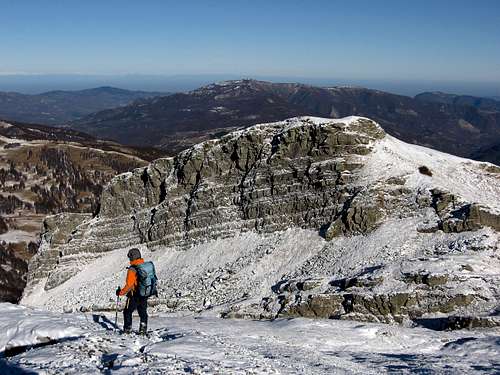
***Normal Route from Pratospilla
Alpine F
Vertical gain: 510 m. from Pratospilla
From Pratospilla m. 1351 follow the trail n. 707 to Lago Ballano, when the trail forks turn to left, following the trail n. 707a to Lago Verde, getting to the lake, then to a little shelter (Capanna Cagnin, m. 1589) above the lake. Head to West, rising towards the main boundary ridge between Emilia and Tuscany and reaching it between M. Bragalata and M. Losanna. Turn to right (North) and follow the wide crest facing South-East to the summit of Sillara.
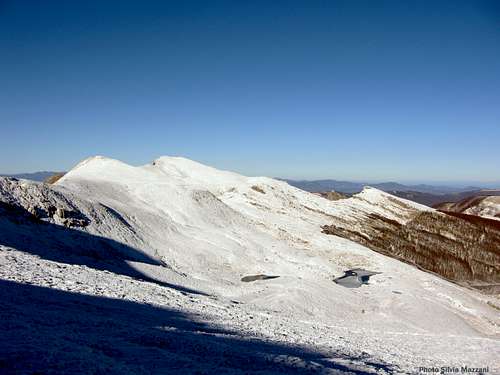
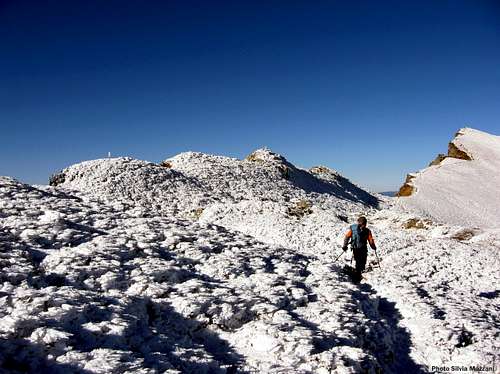
***Normal Route from Lagoni
Alpine F+
Vertical gain: 520 m. from Lagoni, longer develope
From Lagoni m. 1342, follow the trail n. 711 to the Capanne del Lago Scuro, then the trail n. 713, climbing steeply a rocky step, then entering a valley leading to a steep snow slope, rising to Passo Paitini and getting the main boundary crest. Turn to left (South) and follow all the ridge. getting to a characteristic huge cairn. Climb the last slopes to the summit cross.
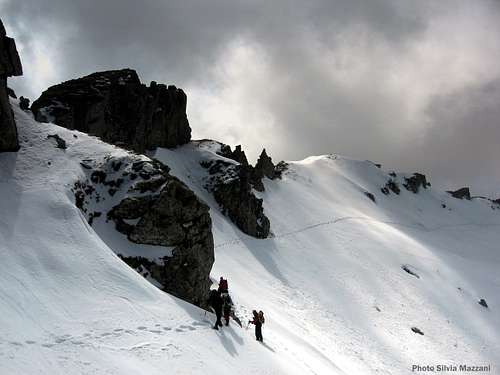
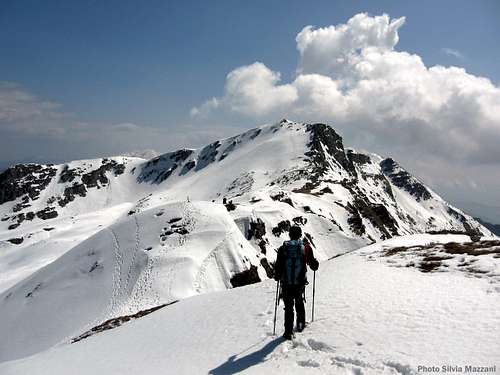
Descent - All the routes previously described are also suitable for the descent and for various crossings and combinations
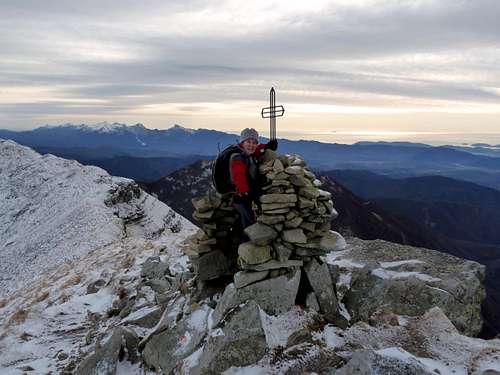
Emergency shelters along the routes
We can find an emergency shelter along each routes:
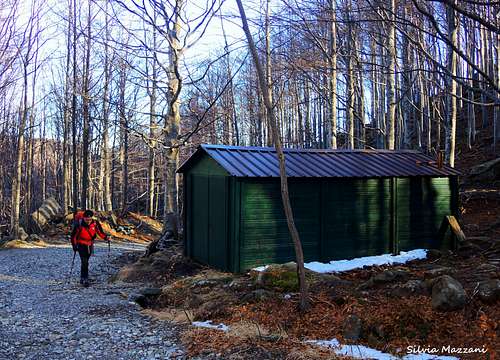

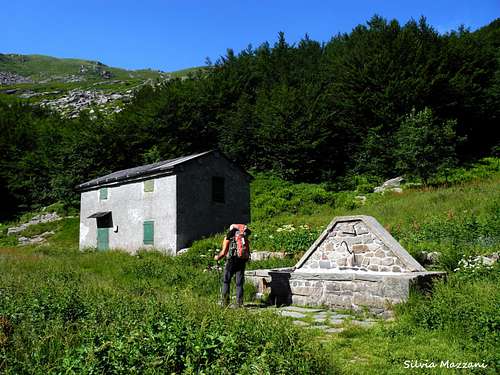
- Capanna Forestale della Pianaccia m. 1270 on the Normal route from Valditacca
- Capanna Cagnin m. 1589 on the Normal route from Pratospilla
- Capanne del Lago Scuro m. 1528 on the Normal route from Lagoni
Red Tape
Monte Sillara is located inside Parco Nazionale Appennino Tosco-Emiliano, established in 1997. Fires are strictly forbidden and the whole fauna and flora is protected. Don’t disturb fauna and other mountaineering and hikers’ peacefulness with every kind of noise.
When to Climb
It’s possible to climb and hike all around the year on Monte Sillara; winter ascents require the essential gear as crampons, an ice-axe, eventually a short rope.
Where to stay
Rifugio Lagoni 1342 m +390521889118
Rifugio Pratospilla 1360 m +390521890194
Climate and nature
Climate is subcontinental, with cold and snowing winters and good summertime, generally dry but not too hot, because of the mitigating influence of the Tyrrenian Sea and the action of the winds. The area, usually as far as 1.600 m. of altitude, is covered by a dense magnificent beech-forest.
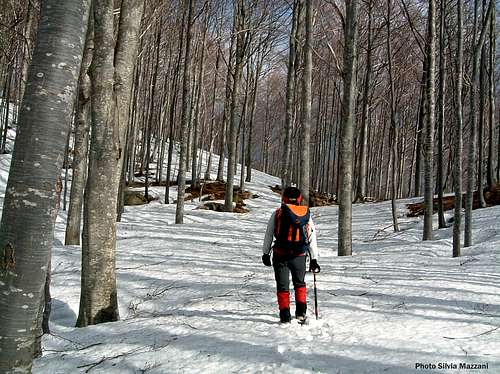
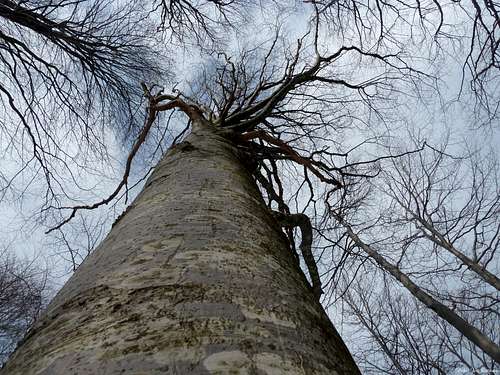
The autochthonous beech (Fagus Sylvatica) is the original and largest specie in the area. We can find a lot of wonderful specimen which can reach heights of 20-30 mts, with characteristic straight trunks.
Meteo
Guidebooks and maps

APPENNINO PARMENSE NEW GUIDEBOOK 2019


Arrampicaparma - Climbing, bouldering & mountaineering" by Silvia Mazzani and Alberto Rampini - Pareti e Montagne Edizioni, II ed. 2011
"Arrampicaparma - montagna, falesie, bouldering" by Silvia Mazzani and Alberto Rampini - Pareti e Montagne Edizioni, 2003
“Appennino Ligure e Tosco-Emiliano” by M. Salvo and D. Canossini - Collana Guide dei Monti d'Italia CAI-TCI
- Maps
“Le valli del Cedra e del Parma (The Cedra and Parma Valleys)” Map 1:25.000 (CAI-Regione Emilia-Romagna)
“Alto Appennino Parmense Est” Map 1:50.000 (CAI-Regione Emilia-Romagna)
External Links
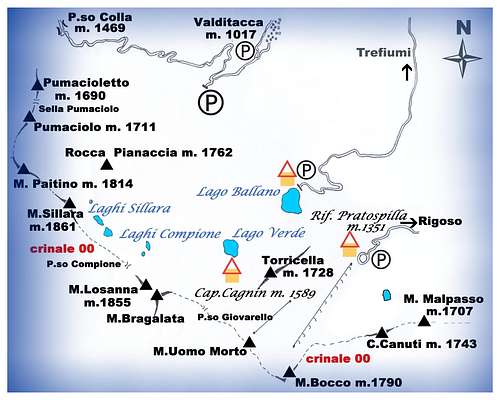
CLUB ALPINO ITALIANO SEZ. DI PARMA
PARCO NAZIONALE APPENNINO TOSCO EMILIANO


